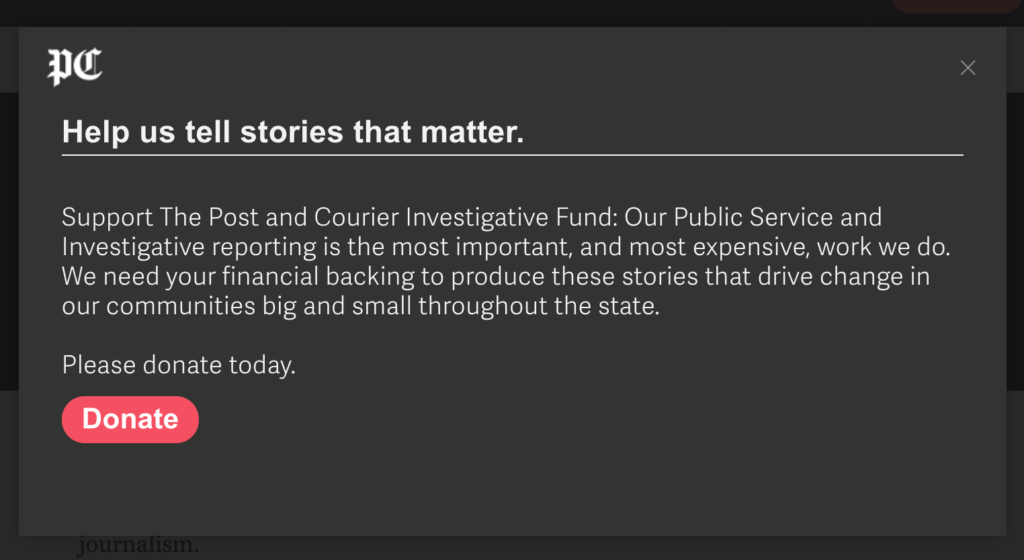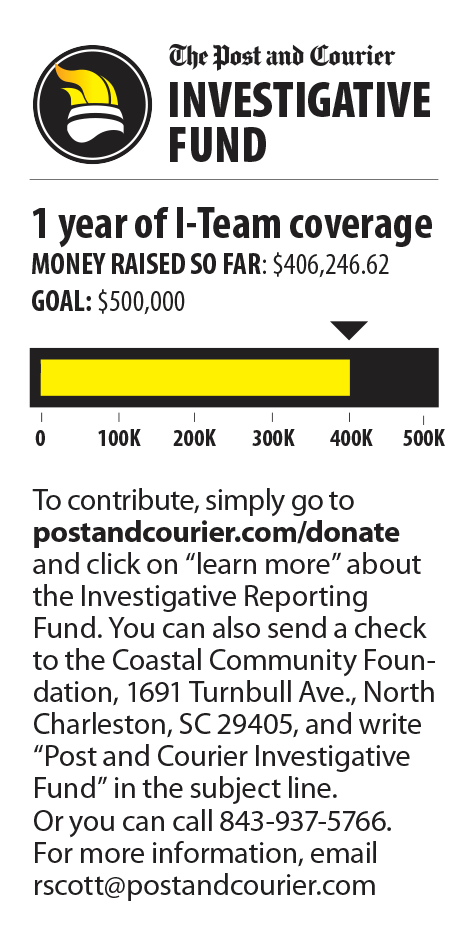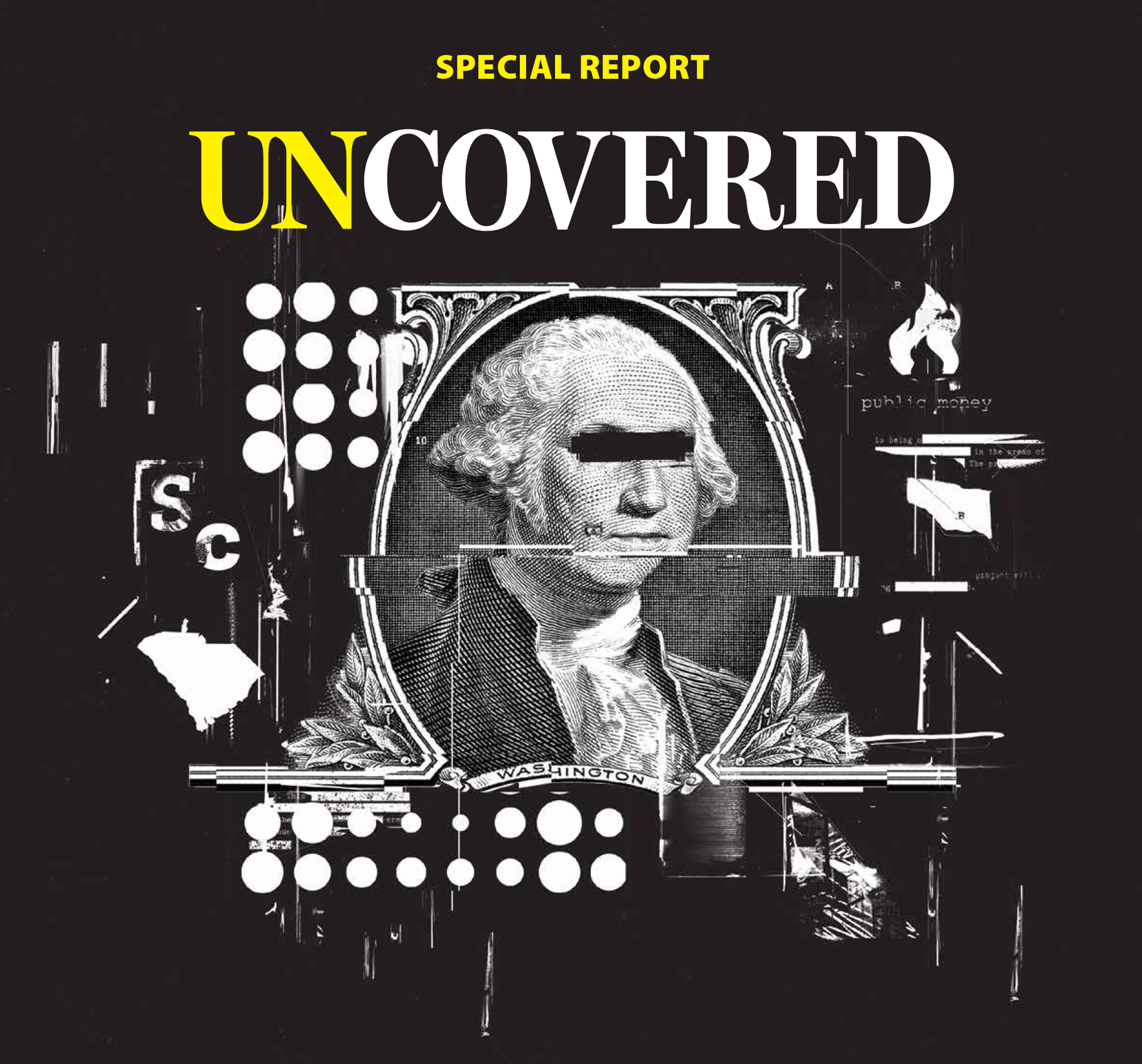How the Post and Courier raised more than $1 million for a South Carolina-wide investigative fund and Education Lab
Autumn Phillips, The Post and Courier,This is a series on Better News to a) showcase innovative/experimental ideas that emerge from the Knight-Lenfest Newsroom Initiative and b) share replicable tactics that benefit the news industry as a whole. This “win” comes from Autumn Phillips, executive editor of The Post and Courier in Charleston, S.C. The Post and Courier participated in the Poynter Local News Innovation Table Stakes program in 2017-18.
Learn more about The Post and Courier’s fundraising efforts on the “It’s All Journalism” podcast.
Question: What communities do you serve and what can you tell us about the history of your organization?
Answer: The Post and Courier is a locally owned and operated newspaper serving the Charleston metro region and all of South Carolina. Founded in 1803, it is the oldest daily newspaper in the South. The news organization now has a newspaper, website and other digital products and has local newsrooms in Charleston, Columbia, Greenville, Myrtle Beach and Spartanburg. It serves a general news audience interested in South Carolina news.
Q: What problem were you trying to solve, and why was solving the problem strategically important for your organization?
A: Like most news organizations, The Post and Courier’s business model has been undergoing significant upheaval since at least the 2007-08 recession. Our traditional revenue paradigm has shifted as the bulk of local advertising spending — as much as $8 of every $10 spent — now goes to Facebook, Google and others.
We can no longer count on traditional advertising and print circulation to pay for our newsrooms. In late 2019, we set a goal of paying for our existing newsroom staff with digital subscription revenue by the end of 2023. We have made significant progress toward that goal.
However, in 2020, we determined that we need to rely also on philanthropy to fund our journalism. We set initial goals of raising $100,000 in 100 days and paying entirely for our projects and investigative team by eventually raising $500,000.
We are starting with our investigative team, but we ultimately want to fund a quarter of our newsroom budget through philanthropy.

This pop-up box appears on the Post and Courier’s site, asking people to donate to its Investigative Fund.
Q: How is this approach related to Table Stakes (e.g. one of the 7 Table Stakes and/or an outgrowth of the Knight-Lenfest initiative, etc.)?
A: Our funded journalism initiative relates to Table Stake No. 5 (“Diversify and grow the ways you earn revenue from the audiences you build”).
We aimed to raise money from our existing loyal followers and subscribers while also building new funnels of wealthier community members who share our values.
Q: How did you go about solving the problem?
A: We launched a campaign on Feb. 14, 2021, to raise $100,000 in 100 days. We designed a campaign that would allow us to experiment with multiple levers and “fail fast.”

Every Sunday during their 100-day campaign, the Post and Courier updated print readers on their fundraising progress.
The previous year, we contacted the Coastal Community Foundation here in Charleston and set up an agreement for them to act as our fiscal sponsor. All donations go to a fund they manage, which allows donations to be tax deductible. When we need to access the money, we fill out a form that explains to the foundation how we will use it.
The campaign started on Feb. 14 with a Page One column by Mitch Pugh, who at the time was executive editor of The Post and Courier and recently became executive editor of the Chicago Tribune. We put a thermometer on the front page every Sunday to show our progress.
The campaign launched on the same days we published our first installment of a year-long project called “Uncovered.” We have partnered with 16 community newspapers across South Carolina and have been reporting on corruption, mismanagement and abuse of power in parts of the state that are news deserts or whose papers do not have the time or money needed for this kind of investigative work.
“Uncovered” inspired people to give across the state, and we exceeded our $100,000 goal in less than a month.
The “Uncovered” series has exposed:
- excessive spending by regional gas authorities around the state, including pricey trips to resorts on the ratepayers’ dime;
- allegations of nepotism and questionable spending by a Greenville-area fire district, spurring lawmakers to form a task force to look into the future of such districts;
- and allegations of cronyism and ethical breaches at one of the state’s newest and most ambitious educational experiments: a statewide governor’s school for students interested in agriculture.
Impacts to date include a call for reform within 72 hours of our first story from South Carolina Gov. Henry McMaster and at least four other public officials. And the S.C. Legislature approved funding for the State Law Enforcement Division to hire a forensic auditor to investigate white collar crimes, a gap we brought to light with our reporting.
For “Uncovered,” The Post and Courier is proud to partner with these local news organizations across the state: The Chester News & Reporter, The (Orangeburg) Times and Democrat, The (Greenwood) Index-Journal, Aiken Standard, The Kingstree News, The Newberry Observer, Lancaster News, The Easley Sentinel-Progress, The Independent Voice of Blythewood and Fairfield, Pickens County Courier, Latino Newspaper, The Sumter Item (another Table Stakes alumni news organization), The Laurens County Advertiser, The Charleston Chronicle, The Gaffney Ledger and the Pageland Progressive Journal.
Partner newsrooms contribute reporting and sourcing and publish the stories simultaneously with The Post and Courier. All stories are published without a paywall to maximize their reach.

The Post and Courier partners with news organizations across the state on its “Uncovered” series. (Photo illustration by Chad Dunbar/Post and Courier)
Q: What worked?
A: The main lesson we learned is that showing the value of the work inspired people to donate.
Other lessons:
- The editor’s column drove donations. We published it in print on the front page, attached it to the story online and reproduced it in a subscriber-only newsletter. At the end of the campaign, we sorted and charted our donation data. We saw huge spikes on the two days we ran a column — on the campaign launch day and during Sunshine Week, a week when news organizations promote open government and access to public information.
- We had success with a donor thank-you event. We tried a few iterations of virtual and in-person fundraising events, but the greater success came from a donor thank-you cocktail hour and newsroom tour for a small group. The one-on-one conversations and a chance to see the newsroom behind-the-scenes inspired some donors to give even more. Reporters and editors attended and socialized at the event that included a dozen of our top donors. The publisher, the executive editor, managing editor and an investigative reporter gave speeches. Our director of development ended the presentation with a video and asked for continued support.
- We created a director of development position, which is full time and reports to the publisher. This person organizes fundraising events, authors a newsletter to donors, and makes direct asks from foundations and individuals donors for our journalism initiatives. She also tracks donations and spends a lot of time in donor relations — sending thank yous, making phone calls and setting up renewals.
- One-on-one sit-down conversations with potential donors brought in the largest gifts. Tip: Make a direct ask for a specific amount.
- With each “Uncovered” story, we ran a “What it cost” box, including staff time, FOIA fees and travel. The first story cost $38,000 to produce.
- To date, we have raised more than $500,000 for the “Uncovered” project, which is enough to fund our investigative team for one year. So far, 1,600 people have donated. Donations ranged from $10 to $150,000. Most individual donations are between $100 and $250.
- We also raised $660,000 to fund a three-person, three-year Education Lab to revisit the issues raised by our “Minimally Adequate” series, which highlighted the need for public education reform in South Carolina.
- We are transparent about funding of specific journalism by foundations and large donors, but we allow individuals who donate through our website to remain anonymous to the public. For those willing to be named, we have published all the names of donors who have contributed more than $250. We have followed the example of The Seattle Times’ Education Lab by requiring large donors to sign an Editorial Independence statement at the time of their pledge, codifying that a donation does not grant special access to reporters or prior knowledge of our journalism. The Editorial Independence statement is also published on our website and fundraising materials.
Q: What didn’t work?
A: It turns out that 100 days is a long time for a campaign. In fact, it was too long. By the end of 100 days, we were starting to see some fatigue from the continued “asks.”
Virtual fundraising events were popular and well attended, but did not lead to donations.
The messaging in our pitch started out being about us, but making it about the community has been much more effective.
One of the most satisfying parts of this project was working with the community papers, using their local knowledge and our resources to shine a light on places where corruption is thriving. Early on, project editors reached out to smaller newspapers around the state with an assist from the South Carolina Press Association. Some of these new organizations joined the project later, after we received story tips in the communities they serve. Some of these newspapers were active participants in the reporting process, some simply provided tips andwhile others were happy to let us do the bulk of the work while jointly publishing the projects.
The key thing to know in advance is that the smaller papers have journalists working several beats, sometimes reporting, shooting photos, writing and laying out the paper. It mostly comes down to the time and resources the partners can put into it.
The lightbulb really went off for us when we started crowd-sourcing some of the larger statewide stories — asking each partner to make a few phone calls or comb through a database. It’s not an overwhelming amount of work but adds to the scope immensely.
If we could go back to the beginning of the project knowing what we know now, we would look for more of those opportunities for partners to participate in bite-size ways to generate enthusiasm and buy-in.
Q: What happened that you didn’t expect?
A: We were surprised by an outpouring of money with the first “Uncovered” story, quickly surpassing our $100,000 goal. Some funds came from unsolicited big donors from across the state.
Q: What would you do differently now? What did you learn?
A: Fewer big events and more one-on-one meetings.
Q: What advice would you give to others who try to do this?
A: We are lucky to have buy-in across the entire organization — publisher, newsroom, marketing. That is the key to moving quickly, failing fast and setting a long-term strategy.